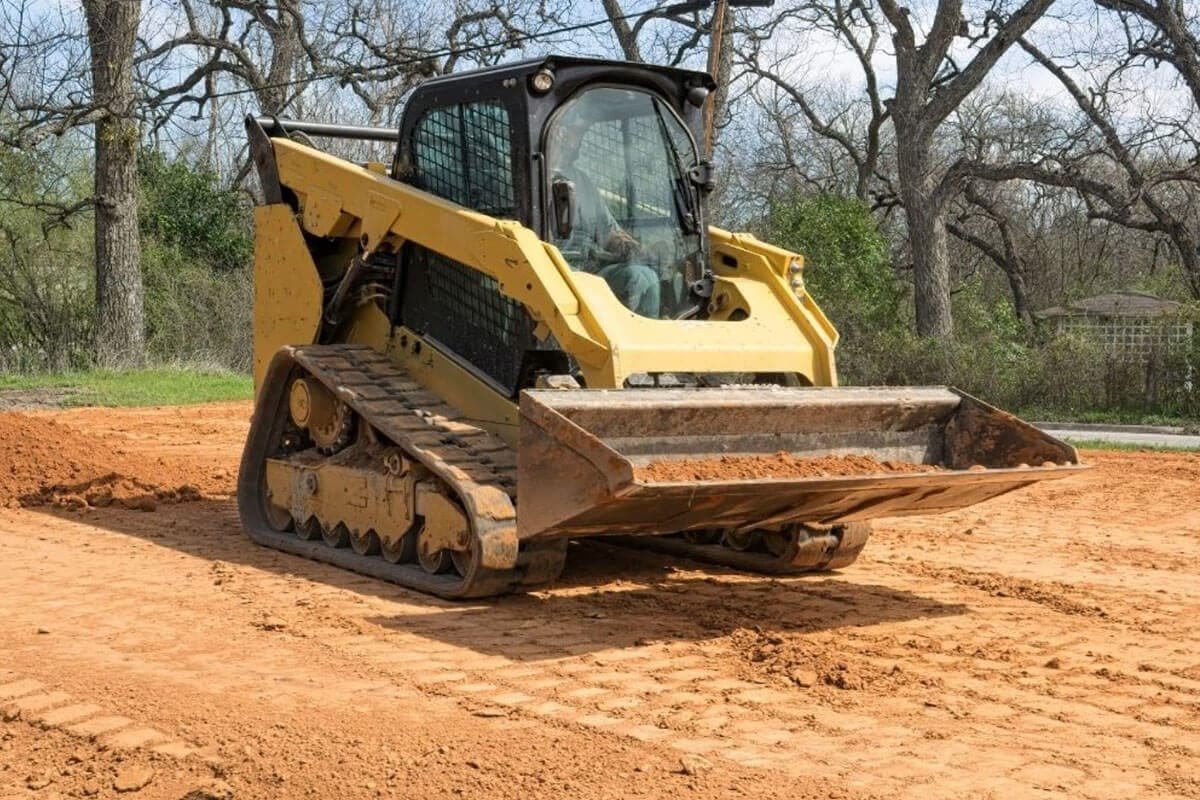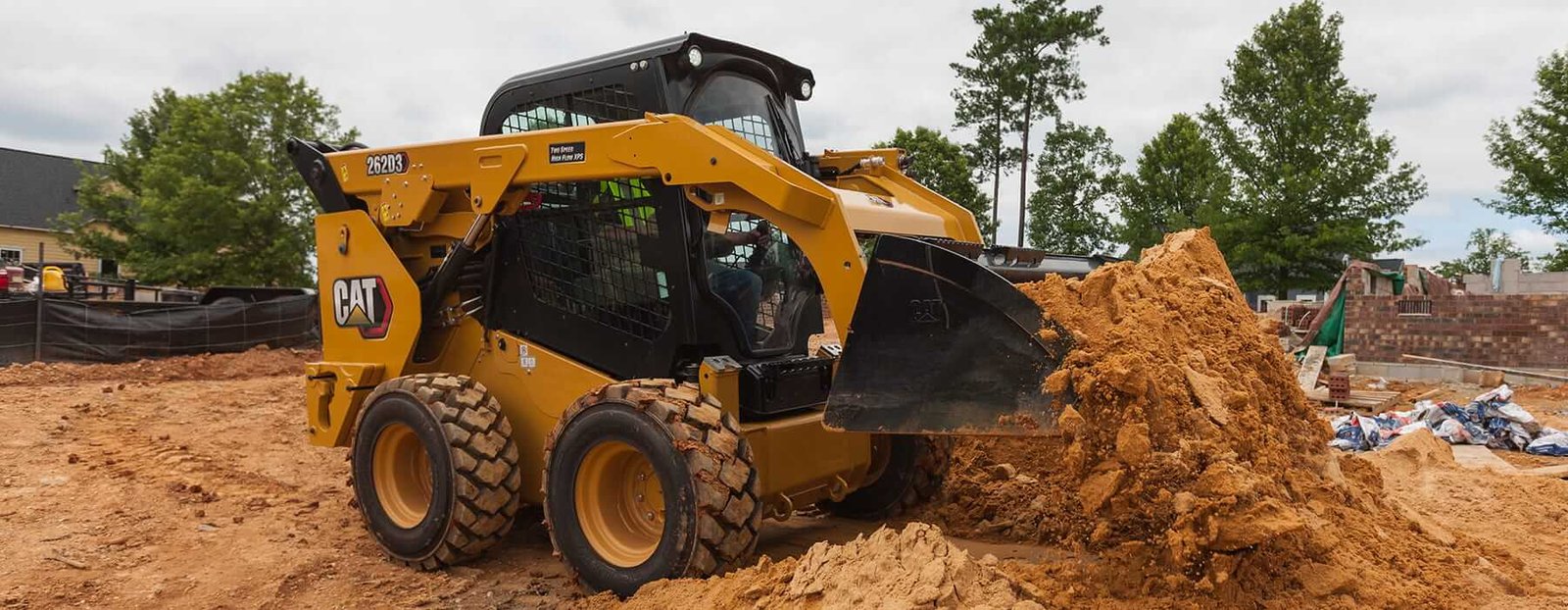Introduction
Skid steers and mini skid steers are versatile and popular machines used in various industries such as construction, agriculture, landscaping, and more. These machines are compact and can easily navigate tight spaces, making them ideal for projects with limited access.
However, skid steers and mini SSLs have significant differences in terms of size, lift capacity, operating costs, controls, and application. Therefore, it is essential to understand these differences to choose the right machine for your needs.
In this post, we will explore the differences between skid loaders and mini skid loaders to help readers make an informed decision about which machine is best suited for their specific project.

Skid Steer Vs. Mini Skid Steer: Size & Weight
Skid steers and mini skid loaders differ significantly in terms of their size and weight. Skid steers are generally larger, heavier machines that range from 1,750 to over 10,000 pounds, while mini skid loaders are smaller and lighter, weighing between 500 to 4,000 pounds. These size and weight differences have a significant impact on the performance and maneuverability of each machine.
Skid steers are typically larger and more powerful than mini skid loaders. They can handle more weight and have a higher lifting capacity, making them ideal for heavy-duty projects such as construction and demolition. However, their size and weight can also make them more challenging to maneuver in tight spaces, which can be a disadvantage in certain applications.
On the other hand, mini skid loaders are smaller and more compact, making them easier to maneuver in tight spaces. They can navigate narrow doorways, hallways, and other areas where larger machines may not fit, making them ideal for indoor applications. However, their smaller size also means they have lower lift capacities, and they may not be as suitable for heavy-duty projects as skid steers.
Skid Steer Vs. Mini SSL: Lift Capacity
The lift capacity is a critical factor when it comes to choosing between a skid loader and a mini skid loader. The lift capacity of a machine determines the amount of weight it can lift and move, and it directly affects the types of tasks that each machine can perform.
Skid steers typically have a higher lift capacity than mini skid loaders. The lift capacity of a skid steer can range from 1,000 to over 4,000 pounds, depending on the model. This makes skid steers ideal for tasks that require heavy lifting, such as moving large objects, hauling materials, and excavating. With their powerful engines and hydraulic systems, skid steers can also handle more significant loads, making them ideal for heavy-duty projects.
In contrast, mini skid loaders have a lower lift capacity, typically ranging from 500 to 2,000 pounds. While this may seem like a limitation, mini skid loaders are still useful for a wide range of tasks.
They are often used for landscaping projects, moving smaller materials such as dirt and mulch, and performing excavation work in tight spaces. They are also ideal for indoor projects, such as in warehouses or construction sites, where space is limited, and a larger machine would not fit.
It is important to note that the lift capacity of a skid steer or Mini SSL can be affected by various factors such as the weight distribution of the load, the height to which the load is lifted, and the type of attachment being used.
It is crucial to consult the manufacturer’s specifications and guidelines to determine the maximum lift capacity of the machine and to ensure safe and efficient operation.

Operating Costs
Operating costs are a crucial factor to consider when choosing between skid loaders and mini skid steers. Skid steers are generally larger and more powerful, which means they may have higher operating costs. They consume more fuel, require more maintenance, and may have higher repair costs due to their more complex systems.
In contrast, mini skid loaders have lower operating costs due to their smaller size and lower fuel consumption. They also require less maintenance and may have lower repair costs due to their simpler systems.
However, it’s essential to note that the operating costs of both machines can vary depending on factors such as usage, maintenance practices, and the specific model. It’s important to factor in all of these considerations when deciding which machine is the best fit for your needs and budget.
Controls and Ergonomics
Skid steers and mini skid loaders also differ in their controls and ergonomics. Skid steers have more complex control systems that require the operator to use foot pedals and hand controls to operate the machine. On the other hand, mini skid steers typically have joystick controls that are easier to use and more intuitive.
Additionally, skid loaders often have a larger and more comfortable cab than mini skid steers. They may have more headroom and legroom, as well as more features such as air conditioning and heat. This can contribute to operator comfort and reduce fatigue, which can improve productivity.
However, mini skid loaders are designed to be more compact, and their controls are more streamlined, which can make them easier to use in some situations. The joystick controls are more precise, which can be advantageous when working in tight spaces or performing delicate tasks.

Applications
Skid loaders and mini skid loaders have different applications and are best suited for specific tasks. Skid steers are commonly used in heavy-duty applications such as construction, demolition, and excavation. Their larger size and higher lift capacity make them ideal for moving heavy materials, such as rocks, dirt, and debris.
Mini skid loaders, on the other hand, are best suited for lighter-duty applications, such as landscaping, farming, and indoor projects. Their smaller size and compact design allow them to navigate tight spaces and easily maneuver around obstacles. They are often used for tasks such as grading, digging trenches, and planting.
Overall, the choice between a skid loader and a Mini SSL will depend on the specific needs of the project. For heavy-duty applications where lifting capacity is essential, a skid loader is the best option. For tasks that require navigating tight spaces or indoor projects, a Mini SSL is a better choice. Understanding the application and the specific tasks at hand is essential when choosing between these machines.
Price
When it comes to price, skid loaders are generally more expensive than mini skid loaders. The larger size and higher lifting capacity of skid steers require more materials and more advanced technology, which contributes to their higher price tag. The cost of a skid steer can range from $20,000 to over $100,000, while the cost of a Mini SSL typically ranges from $10,000 to $50,000.
However, it is important to consider the long-term costs and benefits of these machines as well. Skid steers may have a higher initial cost, but their higher lifting capacity and heavy-duty capabilities can make them a more cost-effective option in the long run, especially for large projects. They can also have a longer lifespan than mini skid loaders, which can further increase their cost-effectiveness over time.
On the other hand, mini skid loaders have a lower initial cost and are often more fuel-efficient than skid loaders, which can result in lower operating costs over time. They are also easier to transport and maneuver, which can save time and money on transportation costs.
Ultimately, the decision between a skid loader and a Mini SSL will depend on the specific needs and budget of the project. While skid loaders may have a higher initial cost, they may be more cost-effective in the long run for heavy-duty projects. Mini skid loaders may be a more affordable option for lighter-duty projects or for those with space restrictions. It is important to consider the long-term costs and benefits of each machine when making the decision.

Conclusion
Skid steers and mini skid loaders are two different machines with unique features and capabilities. They differ in size, weight, lift capacity, controls and ergonomics, application, and price. Understanding these differences is essential when choosing the right machine for your project.
Skid loaders are ideal for heavy-duty applications such as construction and excavation, while mini skid loaders are better suited for lighter-duty projects such as landscaping and farming.
When considering the choice between a skid loader and a mini skid loader, it is important to consider the specific needs of the project and the operator’s preferences. The initial cost of the machine should also be considered in light of long-term costs and benefits.
By carefully evaluating these factors, you can make an informed decision about which machine is the best fit for your project. Ultimately, whether you choose a skid loader or a mini skid loader, you can be assured that you are selecting a versatile and reliable machine that will help you get the job done efficiently and effectively.
FAQs
Why Do They Call It a Skid Steer?
The term “skid steer” comes from the way the machine turns. Skid loaders have the ability to pivot in place, allowing them to turn around quickly in tight spaces.
What Is a Skid Loader?
A skid loader is a small, versatile, and agile construction machine that is commonly used in a variety of industries such as construction, landscaping, farming, and forestry.
What Is a Skid Steer vs Bobcat?
A skid loader and a Bobcat are essentially the same thing. Bobcat is actually a brand name of skid steer loaders produced by the company Bobcat Company, but the term “Bobcat” is often used informally to refer to any skid loader, regardless of brand.
What Is Another Name for a Skid Steer?
Another name for a skid loader is a skid loader or a skid loader. These terms are often used interchangeably to refer to the same type of machine. Additionally, some manufacturers may use their own brand-specific names for their skid loaders, such as the Bobcat, Caterpillar’s Multi-Terrain Loader (MTL), or the John Deere Skid Steer Loader (SSL).


